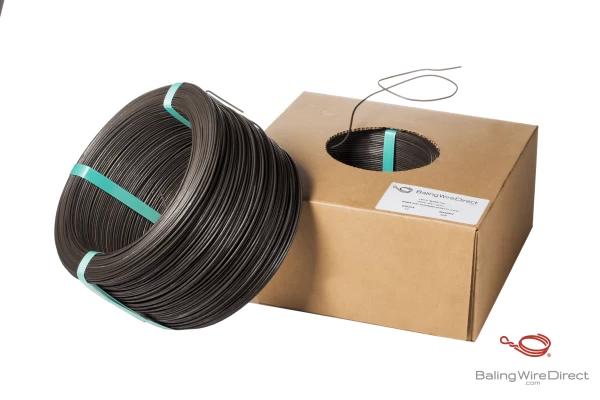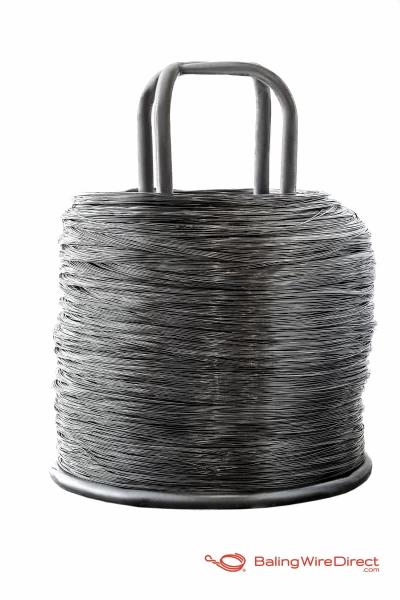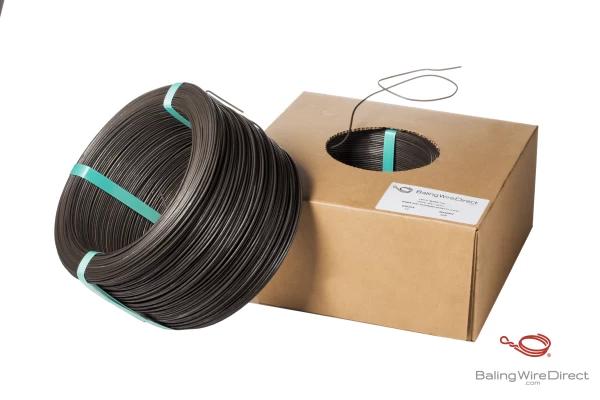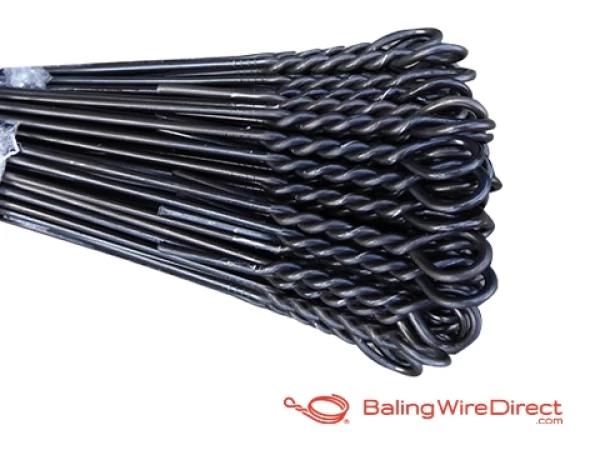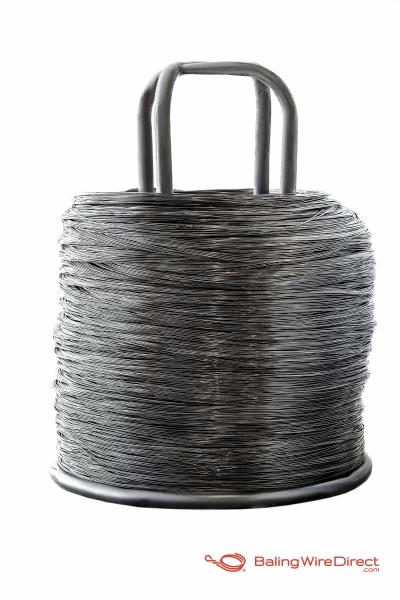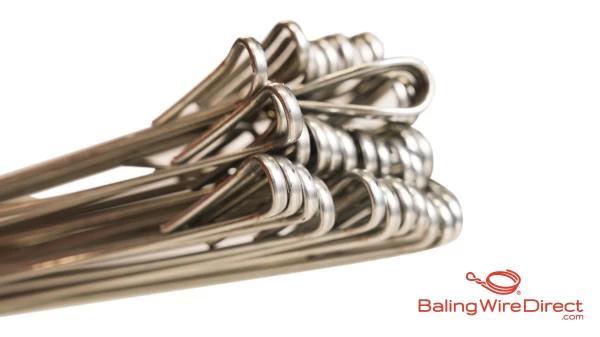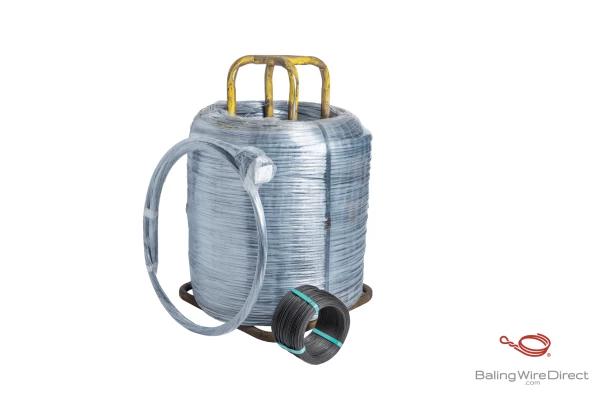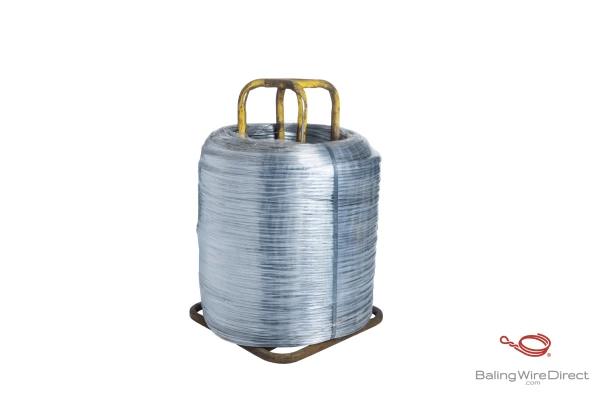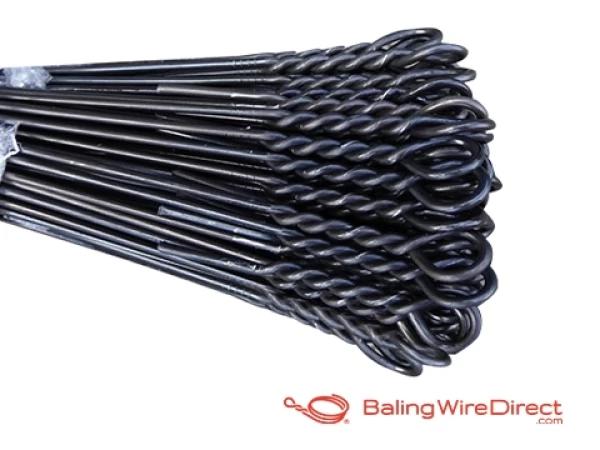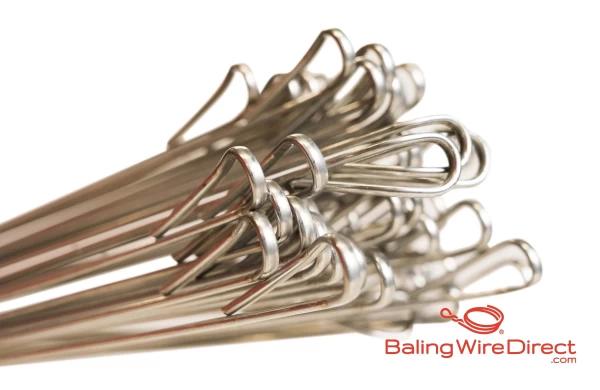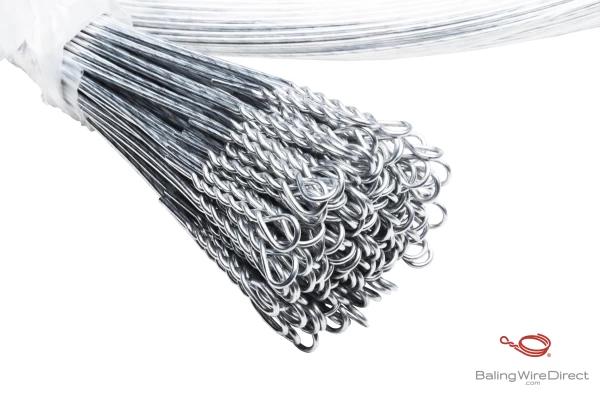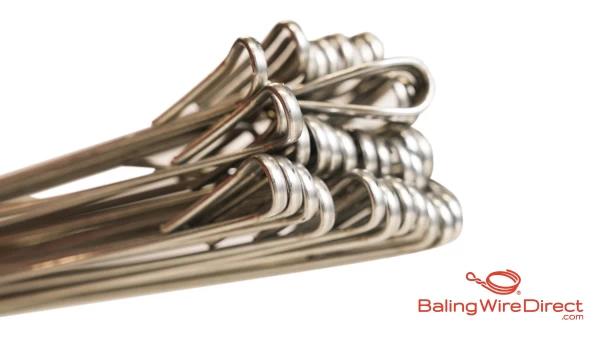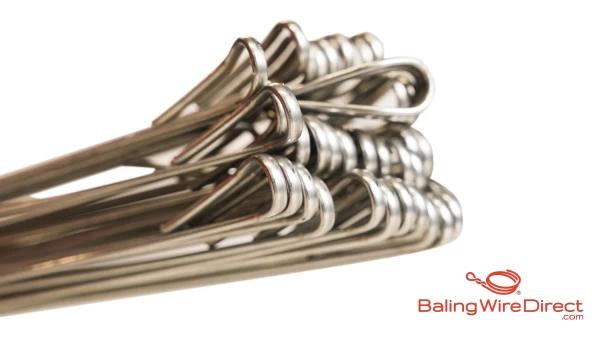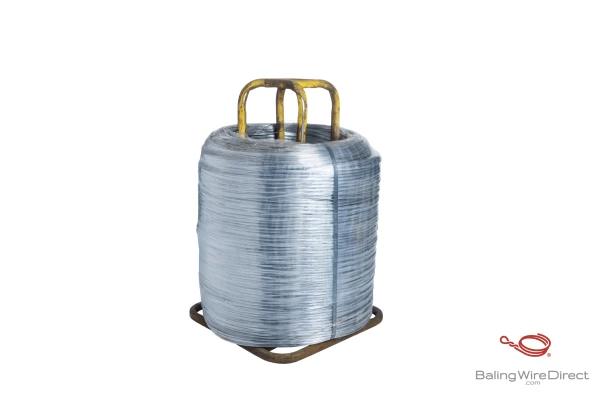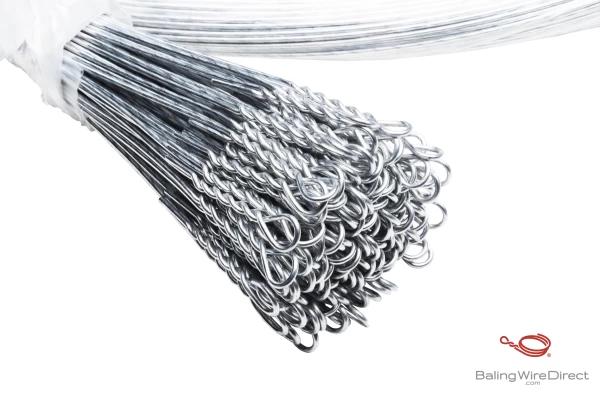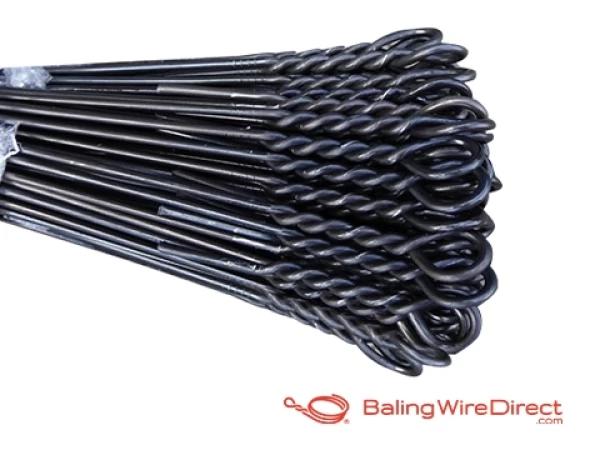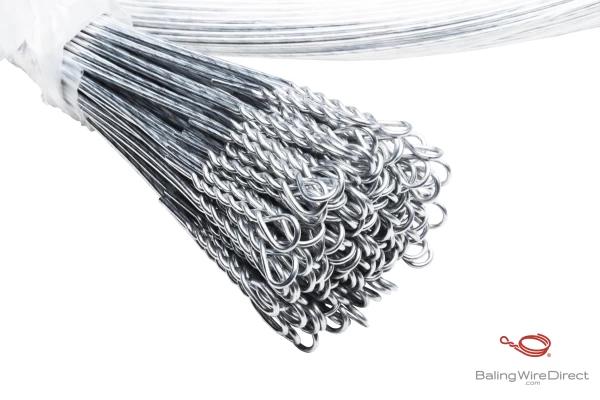Baling wire for recycling textiles
According to the EPA, 2.5 million tons of textiles were recycled in 2018, and the market has only grown since. Baling Wire Direct provides the world’s best baling wire products for the textile recycling industry.
About the textile recycling industry
Baling Wire Direct, a leading baling wire manufacturer, plays a crucial role in the textile recycling industry. Our products are integral to the bundling and transportation of textiles for recycling.
Our commitment to quality and the environment
Our commitment to excellence extends beyond providing high-quality products. We are also dedicated to environmental sustainability through both our manufacturing process and our advocacy for the recycling of used steel wire.
Our manufacturing process begins with purchasing American-made steel from trusted, family-owned mills. The steel we buy comes with metallurgical traceability documents to ensure quality and performance. High-quality American steel helps us cut carbon emissions through reduced shipping distances. It also helps us create quality products that don’t break, reducing waste.
After purchasing, the steel undergoes a mechanical reverse-bending technique that allows us to descale without the use of harsh chemicals. By removing caustic chemicals from our process, we keep our employees and the planet safe. Our partnerships with top recyclers are strengthened by our clean manufacturing process.
The wire is then drawn through a heavy-duty, bullblock continuous wire machine to increase the wire gauge to the desired size. The wire is then gradually air-cooled to ensure consistent tensile strength. After manufacturing, we thoroughly test our products to ensure only high-quality wire products reach our customers.
The textile recycling market forecast
The market forecast for the textile recycling industry shows a trend of steady growth. According to a report by Markets and Markets, the textile recycling market was valued at $6.9 billion in 2022 and is projected to reach $9.4 billion by 2027, growing at a compound annual growth rate of 6.4% from 2022–2027.
The textile recycling market growth reflects increasing awareness of the environmental impact of textile waste and increasing initiatives in waste management, developments in recycling technologies, and increasing social awareness.
The textile recycling process
The process of recycling textiles involves several steps:
- Collection. This includes collecting old clothes, rags, and fabric scraps. Most post-consumer clothing is collected through public donation bins, clothing drives, or independent company programs.
- Baling process. Textiles are baled and sent to processing facilities.
- Sorting and grading. Textiles are sorted by type (clothing versus linens, towels, etc.), by fabric (synthetic versus natural fibers), and by color. This is a crucial part of the process as natural and synthetic fibers must be recycled differently.
- Shredding. Once the textiles are sorted, they are shredded into yarn. The yarn is then cleaned and re-spun for use in weaving or knitting. Any fiber that cannot be spun into yarn is compressed into filling, such as insulation or textile filling inside of mattresses. Polyester-based textiles are granulated into polyester chips, melted, and used to create new fibers for new polyester textiles.
Transportation. The recycled materials are sent to manufacturers and users of recyclables.
The benefits of recycling textiles
Textile recycling provides the following benefits:
- Reduce landfill needs and associated costs.
- Conserve resources such as water and energy.
- Reduce pollution and greenhouse gas emissions.
- Decrease demand for dyes and fixing agents, reducing chemical pollution.
- Generate low-cost raw materials for new products.
- Support a more sustainable fashion industry.
- Protect biodiversity by reducing the need for material cultivation.
Create new, recycled products such as insulation, rags, and upholstery stuffing.
The challenges of recycling textiles
Textile recycling can be challenging due to:
- The absence of commercially viable recycling methods.
- Lack of infrastructure.
- Downcycling. Fibers lose value as they go through the recycling process and eventually have to be landfilled.
- The challenge of separating fiber blends during the recycling process, which is both costly and difficult.
- The increasing quantity of textile waste, which is a significant challenge to recycling systems.
- Lack of consumer knowledge.
We’re hopeful that many of these challenges can be overcome in the coming years, and are proud to provide the world’s best baling wire products to our textile recycling partners.
Best baling wire for textiles
Some of the common wire products used in recycling textiles include:
- Single loop bale ties. These are versatile and can be cut to any length, making them ideal for baling any volume of textiles. They are used with vertical, down-stroke, and horizontal balers.
- Black annealed baling wire. Known for its strength and flexibility, black annealed wire is often used for baling textiles due to its ease of use and ability to handle expansion.
- Galvanized baling wire. This type of wire is coated with zinc to prevent rust and is commonly used in recycling operations due to its durability and resistance to corrosion.
When selecting the gauge of baling wire, consider the following:
- 12 gauge. Commonly used for general-purpose baling, suitable for most textiles.
- 10 or 11 gauge. Recommended for heavier materials, though typically not necessary for textiles unless dealing with large volumes.
The baling wire must match the type of baler being used and the specific requirements of the textile materials to ensure efficient and secure baling. Consult your equipment distributor for advice on what gauges, sizes, and types of baling wire will suit your baler the best.
Clothing baler machines
Common clothing baler machines used in the textile recycling industry include the following:
- Vertical and horizontal balers. These are the most common types of balers used in the textile recycling industry. They are suitable for different volumes of textiles and can be used to compress a wide variety of materials.
- Vertical lifting chamber baler. This type of baler is used by textile plants and textile recycling companies. It can output 2–5 bales per hour depending on labor efficiency. The lifting chamber allows the bale to be wrapped into plastic bags or other sheets, protecting the bale from dust or rain and making transportation easier.
- CBD series textile balers. These are industrial, double-chamber clothing balers. The double chamber design allows for higher productivity.
- Four door balers. These balers are specially used for packing clothing and textiles. Their doors can be opened on all sides, allowing for higher automation. They are mainly used to pack soft materials such as cloth and textiles.
Textile baling wire sizes
We offer wire suitable for baling textiles in a wide variety of common sizes.
Gauge is the standard way of sizing baling wire for recycling. Wire gauge is inversely related to diameter, meaning that a smaller wire diameter corresponds to a higher gauge wire.
- Our hi-tensile galvanized baling wirecomes in 11 and 12 gauge.
- Our regular galvanized baling wire comes in 11, 12, 13, and 14 gauge.
- Our black annealed baling wire comes in 9, 10, 11, and 12 gauge.
Our single and double loop bale ties come in 9, 10, 11, 12, 13, and 14 gauge (with half sizes available in select products)
Textile baling wire categories
We make a wide range of textile baling products. Order bulk quantities of box wire, stem wire, or bale ties. Click on any category to learn more.
Single loop bale ties
Choose from black annealed or galvanized finish
Double loop bale ties
Choose from bright or galvanized finish.
Annealed wire (box)
Annealed for ductility. 50 and 100 lb boxes.
Annealed wire (stem)
Annealed for ductility. Average 1330 lbs per stem
Galvanized stem wire
Class 3 hot-dip galvanization for long-lasting performance
Hi-ten carrier wire
High tensile strength for demanding applications.
References
EPA. (2023, November 22). Textiles: Material-Specific Data | US EPA. Environmental Protection Agency (EPA). Retrieved January 10, 2024, from https://www.epa.gov/facts-and-figures-about-materials-waste-and-recycling/textiles-material-specific-data
Markets and Markets. (2024, 1 10). The Global Textile Recycling Market, Industry Size Forecast. MarketsandMarkets. Retrieved January 10, 2024, from https://www.marketsandmarkets.com/Market-Reports/textile-recycling-market-17543449.html
Further Reading
Does galvanized wire rust?
View DetailsDoes annealed wire rust?
View DetailsWhat is high-tensile wire?
View DetailsWhat is the American Wire Gauge size chart?
View DetailsWhat are the different types of cardboard?
View DetailsWhat is baling wire elongation?
View Details
